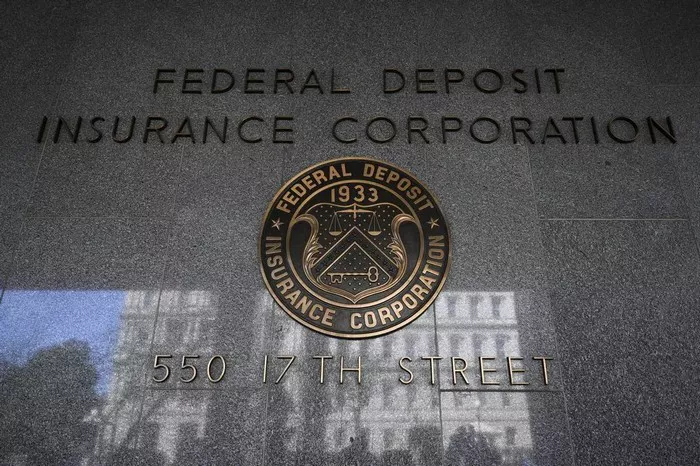Money market accounts (MMAs) play a crucial role in the financial landscape, offering a balance of liquidity and interest rates for depositors. They are often chosen by individuals looking to maximize the returns on their savings while maintaining easy access to funds. However, with the multitude of options available, it’s essential to understand the role of FDIC insurance in safeguarding deposits.
FDIC insurance provides a safety net for depositors, protecting their funds in the event of a bank failure. This article aims to clarify the intricacies of FDIC insurance concerning money market accounts, highlighting coverage limits, differentiating between FDIC-insured MMAs and non-insured alternatives, and providing tips for investors to ensure the safety of their deposits.
Explanation of FDIC Insurance:
The Federal Deposit Insurance Corporation (FDIC) is an independent agency of the United States government established in 1933 in response to the banking crisis of the Great Depression. Its primary purpose is to maintain stability and public confidence in the nation’s financial system by insuring deposits in banks and thrift institutions.
FDIC insurance provides coverage for deposit accounts, including checking accounts, savings accounts, money market deposit accounts (MMDAs), and certificates of deposit (CDs), up to certain limits. The current standard coverage limit is $250,000 per depositor, per insured bank, for each account ownership category. This means that each depositor at a bank is insured up to $250,000 for all their deposits in one ownership category.
Coverage Limits:
Understanding FDIC coverage limits is essential for depositors to ensure their funds are adequately protected. The $250,000 coverage limit applies to each depositor’s combined balances in all accounts at the same insured bank, including MMAs. It’s important to note that coverage limits may vary based on the ownership category of the account, such as single accounts, joint accounts, revocable trust accounts, and certain retirement accounts.
Depositors with deposits exceeding the coverage limits may be at risk of losing uninsured funds in the event of a bank failure. Therefore, it’s crucial to spread deposits across multiple FDIC-insured institutions or account ownership categories to maximize coverage.
FDIC Coverage for Money Market Accounts:
While many traditional MMAs offered by banks and credit unions are FDIC insured, it’s essential to differentiate them from money market mutual funds (MMMFs) offered by investment firms. Traditional MMAs are deposit accounts insured by the FDIC, providing a safe and secure option for depositors.
Differentiating Between MMAs and MMMFs:
Traditional MMAs offered by banks and credit unions are deposit accounts that typically offer higher interest rates than regular savings accounts. These accounts are FDIC insured, meaning depositors’ funds are protected up to the coverage limits in the event of a bank failure.
On the other hand, MMMFs are investment products offered by investment firms, such as mutual fund companies and brokerage firms. MMMFs invest in short-term, high-quality securities, such as Treasury bills and commercial paper, with the goal of generating a higher yield for investors. Unlike FDIC-insured accounts, MMMFs are not insured by the FDIC, nor are they guaranteed by the government.
Risks Associated with MMMFs:
Investing in MMMFs carries certain risks that depositors should be aware of. Unlike FDIC-insured accounts, the value of MMMF shares can fluctuate based on changes in interest rates and the performance of the underlying securities. Additionally, MMMFs are subject to credit risk, as the value of their holdings may decline if the issuer of the securities defaults.
Tips for Investors:
To ensure the safety of their deposits, investors should consider the following tips:
1. Verify that an MMA is FDIC insured by checking the bank’s FDIC status and coverage limits. Depositors can use the FDIC’s online tool, the BankFind, to confirm whether a bank is FDIC insured and to review its coverage limits.
2. Understand the differences between FDIC-insured MMAs and non-insured MMMFs. While both may offer attractive interest rates, MMAs provide the security of FDIC insurance, whereas MMMFs expose investors to market risks.
3. Consider diversifying assets and spreading deposits across multiple FDIC-insured institutions to maximize coverage. By spreading deposits across different banks and account ownership categories, depositors can ensure that their funds are fully protected within the coverage limits.
Conclusion:
In conclusion, understanding FDIC insurance coverage is paramount when choosing money market accounts. While traditional MMAs offered by banks and credit unions are FDIC insured, MMMFs offered by investment firms are not. Depositors should carefully assess the risks associated with each option and take proactive steps to protect their deposits. By conducting thorough research and seeking guidance from financial professionals if needed, investors can ensure the safety and security of their funds in money market accounts.


